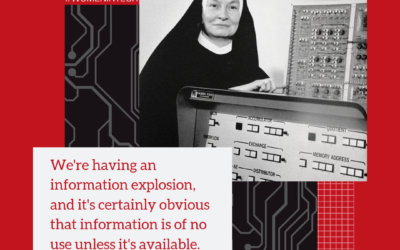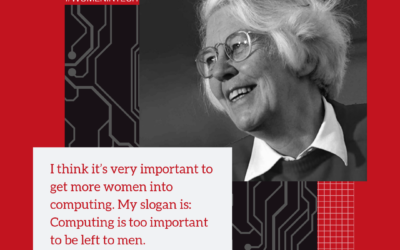
Grace Hopper started her career in computing in 1944 at Harvard University where she joined a research team headed by Howard Aiken. As a member of this team she worked with the Mark I computer as a programmer. She put together a 500 page Manual of Operations for the Mark I computer and co-authored a number of papers with Aiken about it while working in the team. Hopper is also credited with coining the term ‘bug’ to describe unexplained computer failures during this time, after a moth got stuck in the Mark I machine and prevented it from running effectively. In 1949, Hopper joined the team at Eckert-Mauchly Computer Corporation that was developing the UNIVAC I – the first known large-scale electronic computer, which was more competitive at processing than the Mark I.
In 1950 Hopper started work on her own compiler, software that translates source code into a programming language that can be understood and executed by a computer. Her compiler, known as the A-0 System, was completed in 1952. The A-0 System was a set of instructions that could translate symbolic mathematical code into machine language. Hopper is quoted as having said that she developed A-0 because she ‘was lazy and hoped that the programmer may return to being a mathematician’. There was a strong belief at the time that computers could only understand arithmetic, and as a result she had created a compiler that no one would use.
Undeterred, Hopper and her team continued to develop the compiler and produced versions A-1 and A-2 which improved on A-0. The A-2 compiler was the first compiler to be used extensively, and it helped pave the way to the development of programming languages.
Hopper was also responsible for originating the idea that computer programs could be written using entirely English words. The idea lead to her creation of the FLOW-MATIC language, one of the first compiler-based programming languages. FLOW-MATIC and the idea of machine-independent programming languages were the precursor for COBOL – an early, high-level programming language – which is still in use today.
March is Women’s History Month and at Disruptor’s Handbook, we want to take this chance to recognise some of the inspirational and influential women that have made a difference in the world of technology! Check back next Friday to find out about another amazing woman in tech.



